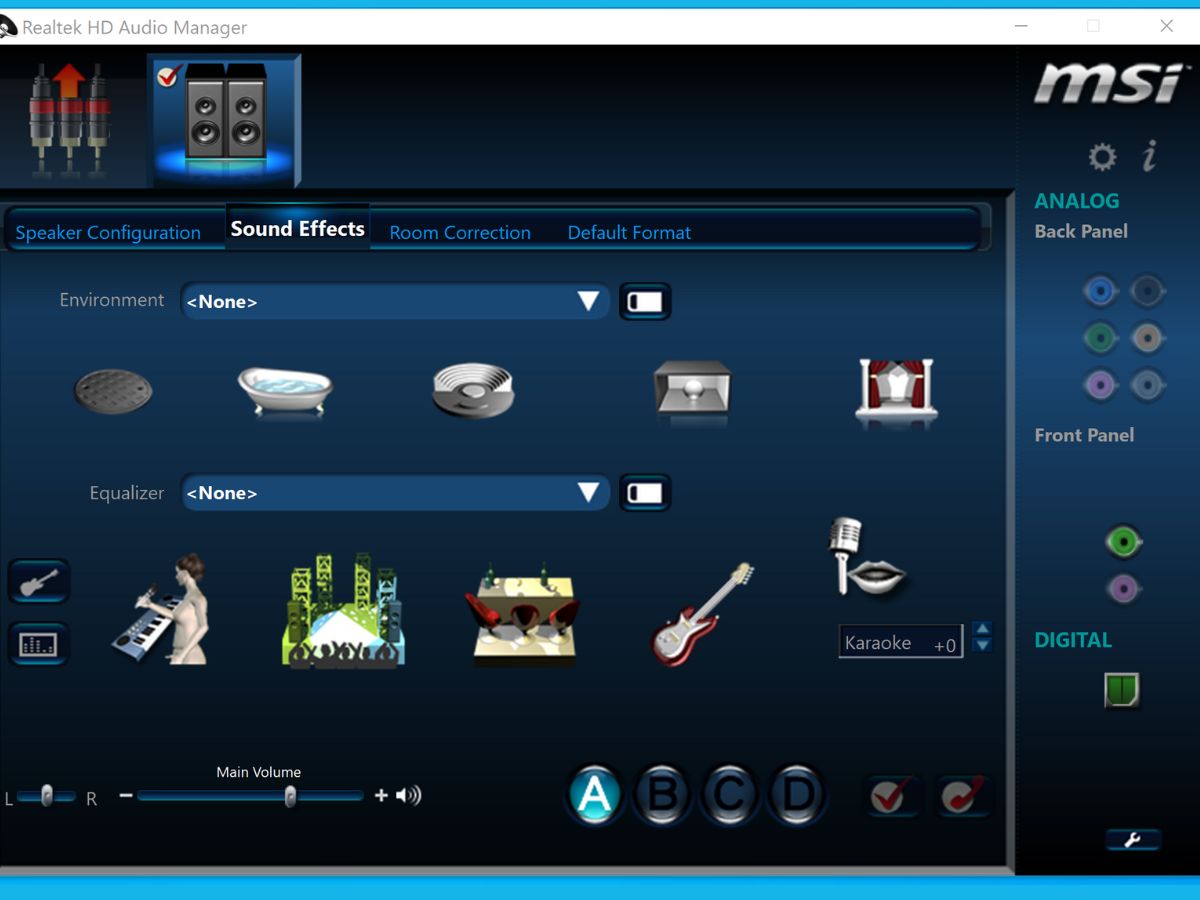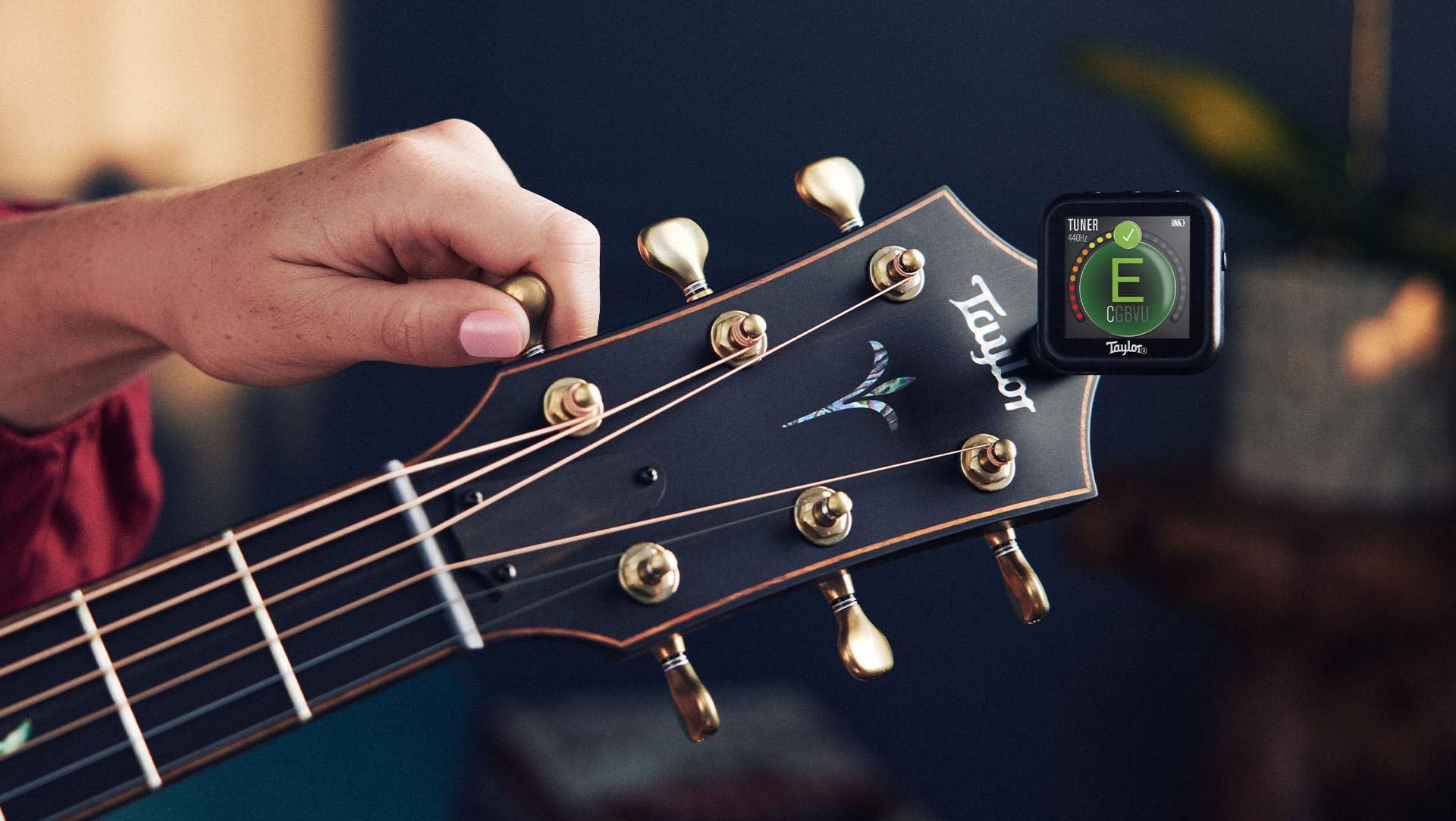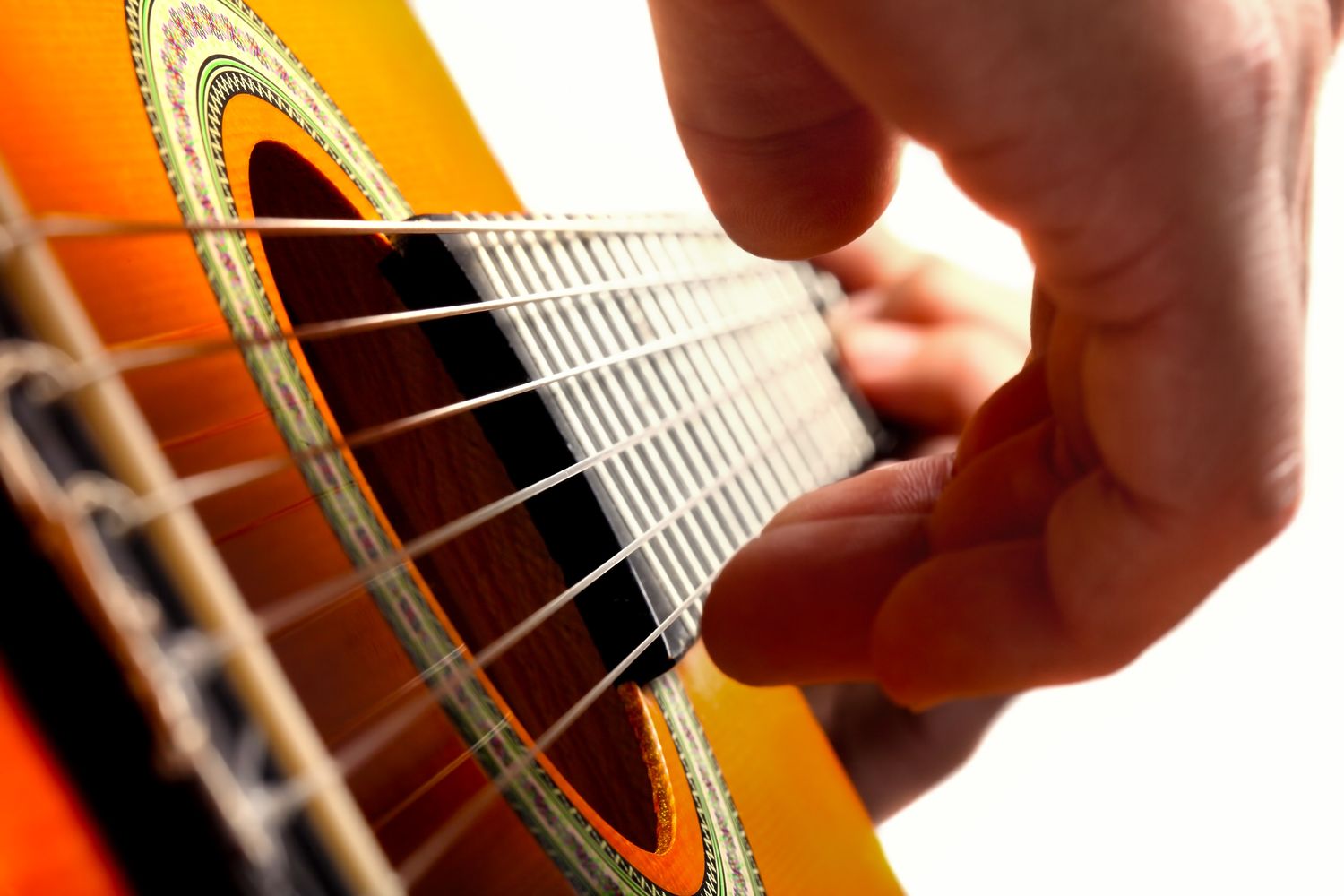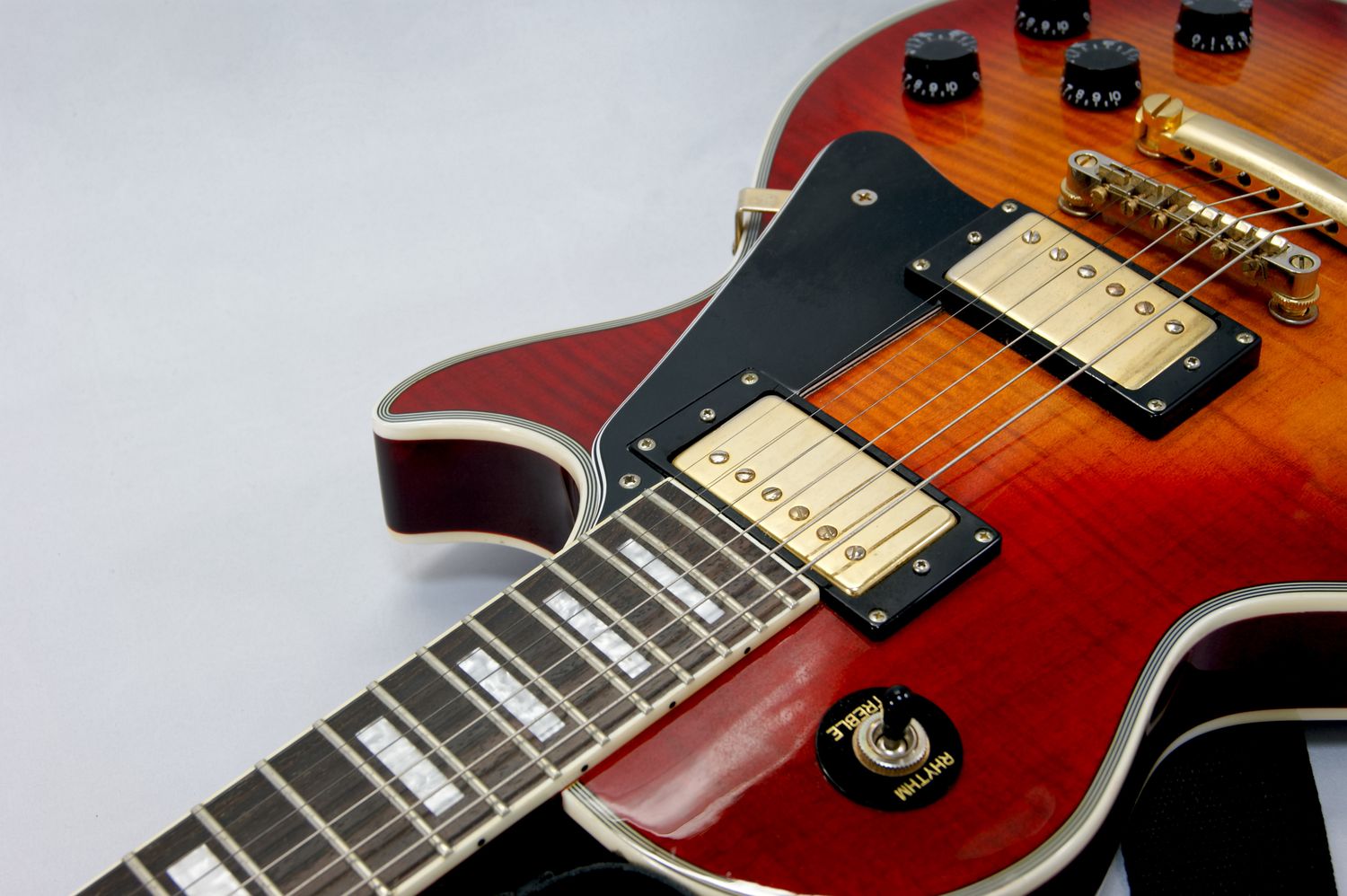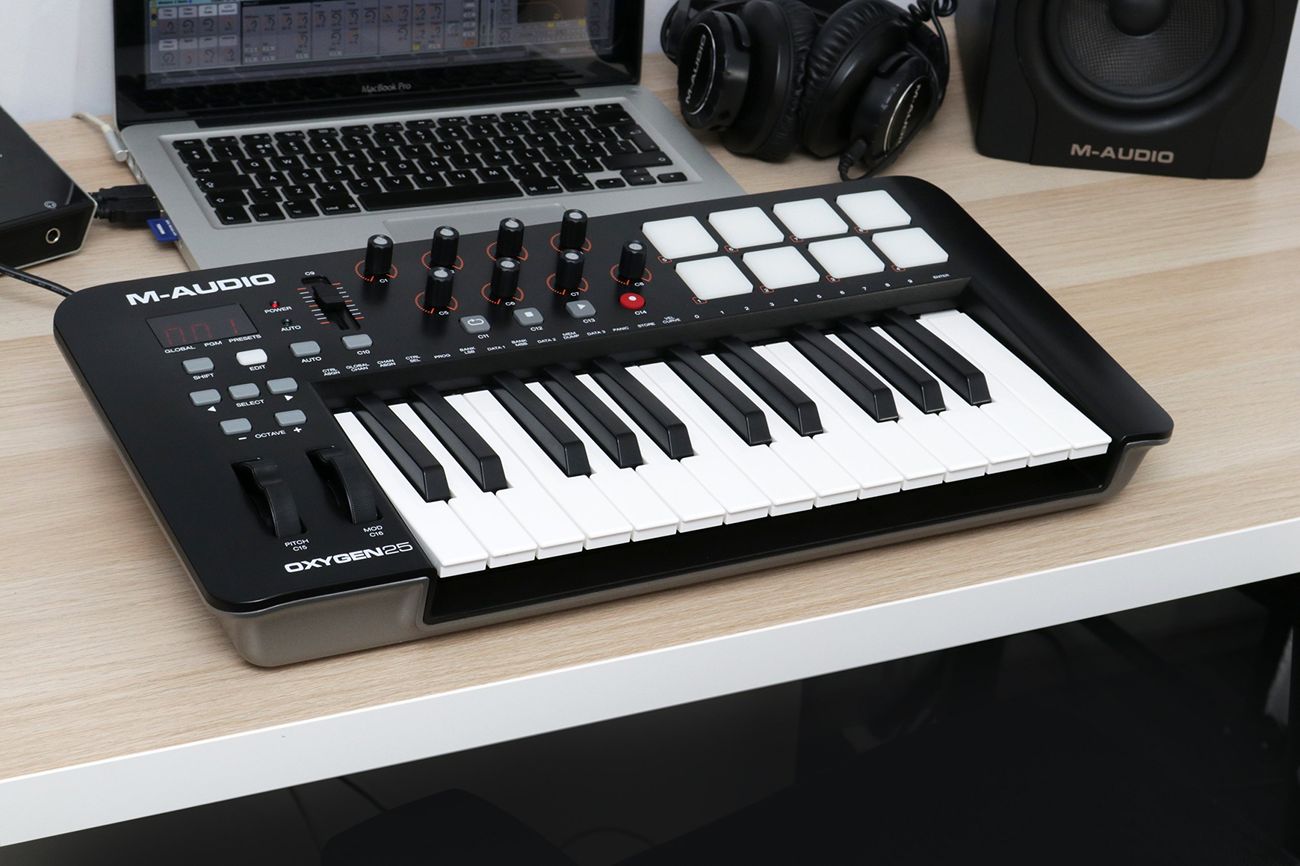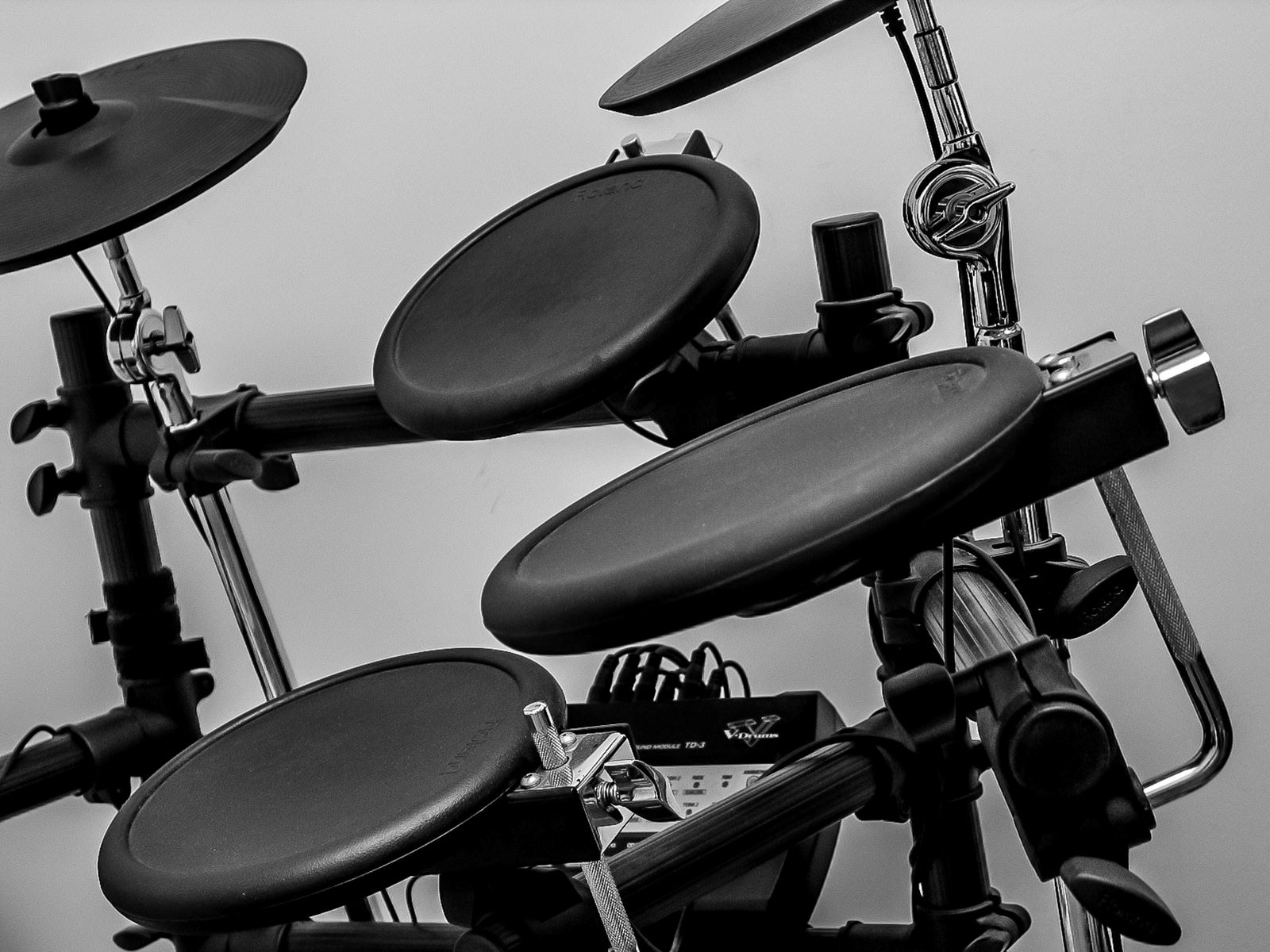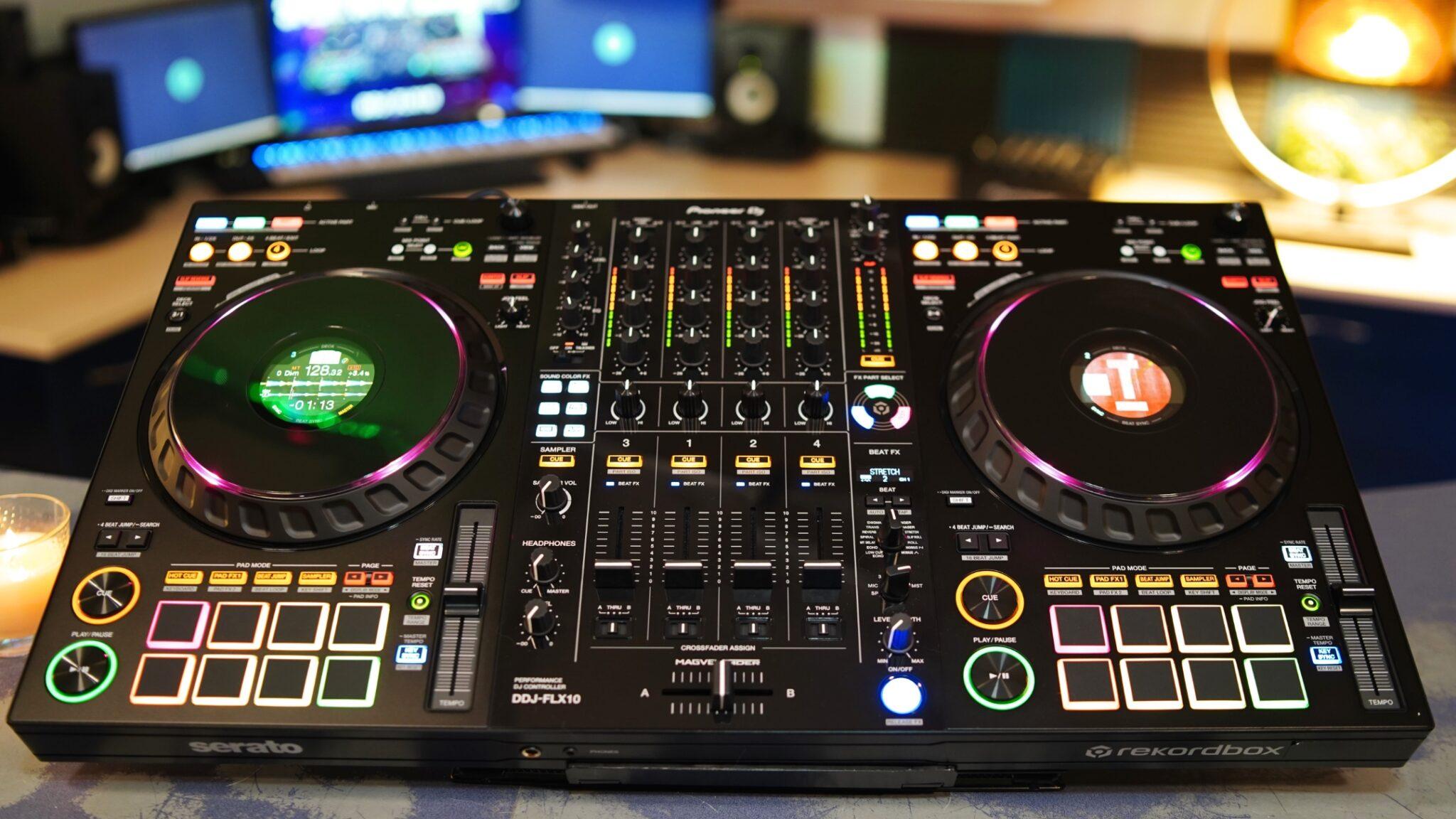Home>Production & Technology>MIDI>How Do MIDI Work With Guitar Effects?
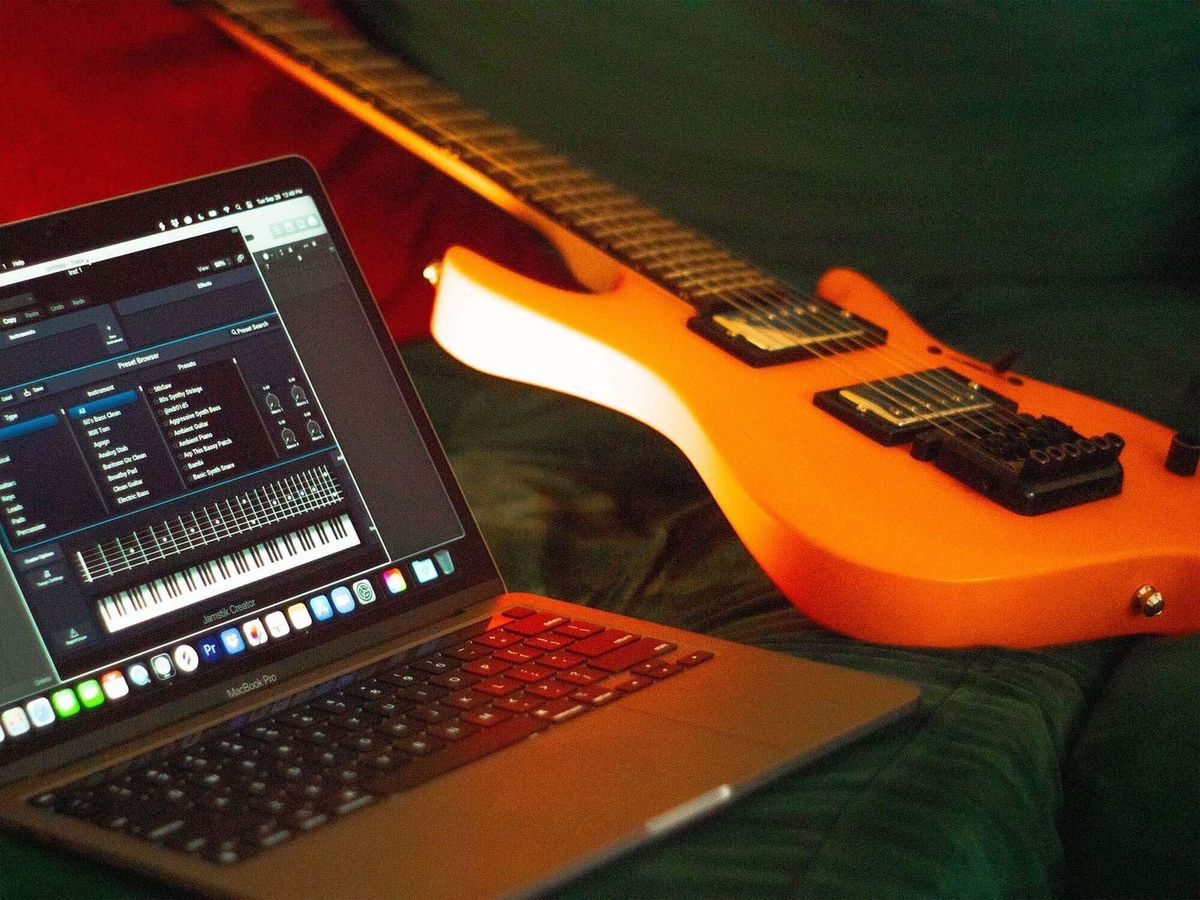

MIDI
How Do MIDI Work With Guitar Effects?
Published: February 19, 2024
Discover how MIDI integrates with guitar effects and enhances your musical creativity. Learn the ins and outs of MIDI technology for guitarists.
(Many of the links in this article redirect to a specific reviewed product. Your purchase of these products through affiliate links helps to generate commission for AudioLover.com, at no extra cost. Learn more)
Table of Contents
Introduction
When it comes to enhancing the sound of a guitar, musicians and sound engineers are constantly exploring innovative technologies to achieve the perfect blend of creativity and technical prowess. One such technology that has revolutionized the world of music production and live performances is MIDI, which stands for Musical Instrument Digital Interface. MIDI has become an indispensable tool for musicians, enabling them to control and synchronize various electronic musical instruments and devices with remarkable precision.
In this article, we will delve into the fascinating realm of MIDI and its seamless integration with guitar effects. By understanding how MIDI works in conjunction with guitar effects, you will gain valuable insights into the limitless possibilities it offers for shaping and refining your musical expression.
Let's embark on a captivating journey that unveils the intricate relationship between MIDI and guitar effects, exploring the benefits and practical aspects of utilizing MIDI technology to elevate your musical endeavors. Whether you are a seasoned guitarist or an aspiring music enthusiast, this exploration will illuminate the boundless potential that MIDI unlocks in the realm of guitar effects.
What is MIDI?
MIDI, an acronym for Musical Instrument Digital Interface, serves as a universal language for electronic musical instruments, computers, and other audio devices to communicate with each other. It functions as a standardized protocol that enables seamless interaction and control between various musical equipment, regardless of the manufacturer. Unlike audio signals, which convey actual sound waves, MIDI data consists of a series of instructions and commands that govern musical parameters such as note pitches, durations, velocities, and control signals.
At its core, MIDI operates on a system of digital messages, allowing electronic instruments and devices to transmit and receive data in real-time. These messages encompass a wide array of musical information, including note-on and note-off commands, pitch bend, modulation, velocity, and control changes. Through this intricate exchange of MIDI messages, musicians and producers can exert precise control over the nuances of sound, from triggering specific notes to adjusting the intensity of effects in a meticulously orchestrated fashion.
One of the key advantages of MIDI is its versatility and compatibility across diverse musical platforms. Whether it's a synthesizer, drum machine, digital audio workstation (DAW), or guitar effects processor, MIDI facilitates seamless integration and synchronization between these instruments and devices. This interoperability empowers musicians to craft intricate compositions, synchronize multiple instruments, and manipulate sound parameters with unparalleled agility.
Moreover, MIDI transcends the confines of traditional musical instruments, extending its influence to lighting systems, stage effects, and multimedia presentations. Its universal applicability and adaptability make it an indispensable tool for enhancing live performances, studio recordings, and interactive musical experiences.
In essence, MIDI serves as a conduit for musical expression, enabling artists and creators to transcend the limitations of individual instruments and unleash the full spectrum of their sonic imagination. By harnessing the power of MIDI, musicians can orchestrate intricate musical arrangements, sculpt captivating soundscapes, and push the boundaries of sonic innovation with unparalleled precision and fluidity.
MIDI and Guitar Effects
Guitar effects pedals have long been revered as a cornerstone of sonic experimentation, allowing guitarists to sculpt their tone and imbue their playing with a myriad of captivating textures and atmospheres. From classic distortion and reverberation to avant-garde modulation and time-based effects, the realm of guitar effects is a playground of sonic possibilities. However, the integration of MIDI technology has elevated the potential of guitar effects to unprecedented heights, offering a realm of control and creativity that transcends conventional limitations.
By harnessing the power of MIDI, guitarists can seamlessly synchronize and manipulate multiple effects units with remarkable precision. This integration empowers musicians to craft intricate soundscapes, seamlessly transition between presets, and dynamically modulate effect parameters in real-time, all with the tap of a footswitch or the click of a button. Whether it's seamlessly transitioning from a clean, chorus-laden passage to a searing, overdriven solo, or orchestrating a symphony of ambient textures with nuanced control, MIDI empowers guitarists to transcend the boundaries of traditional pedalboard setups.
Furthermore, MIDI facilitates seamless communication between guitar effects units and other MIDI-enabled devices, such as synthesizers, sequencers, and digital audio workstations (DAWs). This interoperability opens up a world of creative possibilities, enabling guitarists to integrate their instrument into expansive, multi-dimensional musical landscapes. Whether it's triggering synth pads with a footswitch, synchronizing tempo-based effects with drum machines, or seamlessly integrating guitar performances into electronic compositions, MIDI bridges the gap between traditional guitar playing and the boundless realms of electronic music production.
Moreover, the utilization of MIDI in conjunction with guitar effects fosters unparalleled precision and consistency in live performances. By programming intricate preset changes and effect modulations into MIDI controllers, guitarists can execute flawless transitions and unleash captivating sonic transformations with unwavering accuracy. This level of control not only enhances the sonic impact of live performances but also empowers guitarists to channel their creative energies into captivating, immersive musical experiences.
In essence, the fusion of MIDI and guitar effects heralds a new era of sonic exploration and artistic expression. It empowers guitarists to transcend the confines of traditional pedalboard setups, offering a realm of control, versatility, and sonic potential that amplifies the creative journey. Whether it's sculpting ethereal soundscapes, seamlessly integrating with electronic ensembles, or unleashing dynamic tonal transformations, MIDI and guitar effects converge to redefine the boundaries of musical innovation and creative expression.
Benefits of Using MIDI with Guitar Effects
The integration of MIDI technology with guitar effects yields a myriad of compelling benefits that resonate with musicians, sound engineers, and live performers alike. By leveraging the seamless synergy between MIDI and guitar effects, artists can unlock a realm of creative possibilities and technical finesse that transcends conventional limitations. Let's delve into the captivating array of benefits that ensue from harnessing MIDI with guitar effects.
1. Unprecedented Control and Flexibility
MIDI empowers guitarists to exert precise control over multiple effects units, enabling seamless synchronization and manipulation of diverse sonic textures. This level of control transcends traditional pedalboard setups, allowing for seamless transitions between presets, dynamic modulation of effect parameters, and the orchestration of complex soundscapes with remarkable agility. Whether it's seamlessly transitioning between clean and distorted tones or sculpting ethereal ambient textures, MIDI offers an unparalleled degree of control and flexibility.
2. Enhanced Creativity and Sonic Exploration
The fusion of MIDI and guitar effects expands the horizons of sonic experimentation, enabling musicians to explore new realms of creativity and expression. By seamlessly integrating their instrument into expansive, multi-dimensional musical landscapes, guitarists can harness MIDI to trigger synth pads, synchronize tempo-based effects with electronic instruments, and seamlessly blend traditional guitar performances with electronic compositions. This convergence fosters a fertile ground for artistic exploration, empowering musicians to sculpt captivating soundscapes and push the boundaries of sonic innovation.
3. Seamless Integration with MIDI-Enabled Devices
The interoperability of MIDI facilitates seamless communication between guitar effects units and a diverse array of MIDI-enabled devices, such as synthesizers, sequencers, and digital audio workstations (DAWs). This integration opens up a world of creative possibilities, enabling guitarists to seamlessly integrate their instrument into expansive, multi-dimensional musical landscapes. Whether it's triggering synth pads with a footswitch, synchronizing tempo-based effects with drum machines, or seamlessly integrating guitar performances into electronic compositions, MIDI bridges the gap between traditional guitar playing and the boundless realms of electronic music production.
4. Precision and Consistency in Live Performances
In the realm of live performances, the utilization of MIDI with guitar effects empowers artists to execute flawless transitions and unleash captivating sonic transformations with unwavering accuracy. By programming intricate preset changes and effect modulations into MIDI controllers, guitarists can deliver seamless, immersive musical experiences with unparalleled precision and consistency. This level of control not only enhances the sonic impact of live performances but also amplifies the creative potential of artists, allowing them to channel their energies into captivating, dynamic musical expressions.
5. Redefining the Boundaries of Musical Innovation
Ultimately, the fusion of MIDI and guitar effects heralds a new era of sonic exploration and artistic expression. It empowers musicians to transcend the confines of traditional pedalboard setups, offering a realm of control, versatility, and sonic potential that amplifies the creative journey. Whether it's sculpting ethereal soundscapes, seamlessly integrating with electronic ensembles, or unleashing dynamic tonal transformations, MIDI and guitar effects converge to redefine the boundaries of musical innovation and creative expression.
In essence, the integration of MIDI with guitar effects transcends mere technical prowess, offering a gateway to boundless creativity, sonic exploration, and artistic evolution. It stands as a testament to the enduring synergy between technology and musical expression, empowering artists to embark on a captivating journey of sonic discovery and creative fulfillment.
How to Set Up MIDI with Guitar Effects
Setting up MIDI with guitar effects opens a gateway to a realm of unparalleled sonic control and creative expression. Whether you're a seasoned guitarist venturing into the realm of MIDI integration or an aspiring musician seeking to expand your sonic horizons, the process of configuring MIDI with guitar effects encompasses a series of steps that culminate in a seamless fusion of technical precision and artistic potential.
1. Assessing MIDI Compatibility
Before embarking on the setup process, it's essential to ensure that your guitar effects units are equipped with MIDI connectivity. This involves verifying whether the effects pedals or processors feature MIDI input and output ports, as well as the capability to send and receive MIDI messages. Additionally, it's crucial to ascertain the MIDI implementation of each device, including the supported MIDI channels, control change assignments, and program change capabilities.
2. Establishing MIDI Connections
Once the MIDI compatibility of your guitar effects units is confirmed, the next step involves establishing MIDI connections between the devices. This typically entails using standard MIDI cables to link the MIDI output of a controller or interface to the MIDI input of the guitar effects units. It's imperative to adhere to the correct MIDI signal flow, ensuring that the MIDI output of the controller or interface is connected to the MIDI input of the target effects units in a daisy-chain configuration, if applicable.
3. Configuring MIDI Settings
After the physical MIDI connections are in place, configuring the MIDI settings within the guitar effects units is essential to enable seamless communication and control. This involves assigning MIDI channels, control change numbers, and program change mappings to correspond with the desired parameters and presets within each effects unit. Additionally, some devices may require specific MIDI configurations to enable bidirectional communication for parameter feedback and synchronization.
4. Programming MIDI Commands
Once the MIDI connections and settings are configured, programming MIDI commands becomes pivotal in harnessing the full potential of MIDI with guitar effects. This encompasses assigning MIDI control change messages to modulate effect parameters, assigning program change messages to facilitate preset changes, and creating intricate MIDI sequences to orchestrate dynamic soundscapes and transitions. Moreover, some guitar effects units may offer the flexibility to assign MIDI commands to footswitches or expression pedals, further enhancing real-time control and performance versatility.
5. Testing and Refinement
Upon completing the initial setup and programming of MIDI commands, thorough testing and refinement are imperative to ensure seamless operation and optimal performance. This involves rigorously testing the responsiveness of MIDI commands, verifying the accuracy of parameter modulation, and fine-tuning the MIDI mappings to align with the intended sonic expressions. Additionally, refining the MIDI setup may involve integrating MIDI commands with other MIDI-enabled devices, such as synthesizers or DAWs, to explore expansive creative possibilities and inter-device synchronization.
By meticulously navigating through these steps, the process of setting up MIDI with guitar effects culminates in a harmonious convergence of technical precision and artistic liberation. As the seamless integration of MIDI commands empowers guitarists to sculpt captivating soundscapes, execute flawless transitions, and unleash dynamic tonal transformations, the marriage of MIDI with guitar effects stands as a testament to the enduring synergy between technology and musical expression.
Conclusion
In the realm of musical innovation and sonic exploration, the integration of MIDI with guitar effects stands as a testament to the enduring synergy between technology and artistic expression. As we journey through the captivating landscape of MIDI and its seamless convergence with guitar effects, we are enveloped in a realm of boundless creativity, technical finesse, and artistic evolution.
The fusion of MIDI with guitar effects transcends mere technical prowess, offering a gateway to a realm of unparalleled sonic control, creative expression, and artistic fulfillment. By harnessing the power of MIDI, musicians and guitarists can sculpt captivating soundscapes, seamlessly transition between diverse sonic textures, and orchestrate dynamic tonal transformations with remarkable precision. This level of control not only amplifies the sonic impact of musical performances but also empowers artists to channel their creative energies into captivating, immersive musical experiences.
Moreover, the integration of MIDI technology with guitar effects heralds a new era of sonic exploration and artistic expression. It empowers musicians to transcend the confines of traditional pedalboard setups, offering a realm of control, versatility, and sonic potential that amplifies the creative journey. Whether it's seamlessly integrating with electronic ensembles, triggering synth pads with a footswitch, or unleashing dynamic tonal transformations, MIDI and guitar effects converge to redefine the boundaries of musical innovation and creative expression.
As we reflect on the myriad benefits that ensue from harnessing MIDI with guitar effects, from unprecedented control and flexibility to enhanced creativity and sonic exploration, it becomes evident that this fusion represents a paradigm shift in the realm of musical expression. The seamless integration of MIDI commands empowers guitarists to orchestrate captivating sonic narratives, execute flawless transitions, and push the boundaries of sonic innovation with unwavering accuracy.
Ultimately, the marriage of MIDI with guitar effects transcends the realm of technical proficiency, offering a gateway to boundless creativity, sonic exploration, and artistic evolution. It stands as a testament to the enduring synergy between technology and musical expression, empowering artists to embark on a captivating journey of sonic discovery and creative fulfillment. In this convergence of technical precision and artistic liberation, the fusion of MIDI with guitar effects resonates as a testament to the enduring potential of human creativity, innovation, and the relentless pursuit of sonic excellence.

